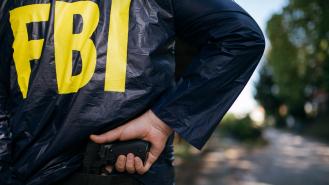
Was the federal government to blame for the tragedy at Waco?
Before the catastrophic events of Spring 1993, few people outside of the Texan Seventh-Day Adventist community knew much of David Koresh. By 19th April that year, the whole world was familiar with the man, as well as his Branch Davidian followers and the terrible, tragic events of The Waco Siege.
On 28th February 1993, an ATF investigation into firearms violations and a search of The Mount Carmel Canter compound - the Branch Davidians’ home - turned ugly. A gun battle ensued which left six Branch Davidians and four ATF agents dead. This was only the beginning.
The FBI quickly wrestled away control of the situation and a siege began; one which ended 51 days later in bloodshed, explosions and the deaths of 76 Branch Davidians, including 25 children.
What was behind the mistakes in the handling of the situation? Were Koresh and his followers just so stubborn that incredible violence was almost inevitable? Or were the federal authorities heavy-handed and guilty of gross governmental overreach?
‘Cult’ or ‘religious group’?
In the lead-up to and during the siege at Waco, federal agencies waged a media offensive, making sure to frequently label the Branch Davidians as a cult. The media went along with this and, in doing so, bought some favour with the American public. The word ‘cult’, after all, is extremely influential and loaded.
By using this language, the federal government was able to adopt an aggressive stance. Accepting that they were a religious group would have had legal implications, given that the US Constitution’s First Amendment is very tight on impinging on all things religious. The FBI and ATF knew that a rebrand was necessary to get the public on their side and legitimise any potential future violence that they may deem necessary.
That said, there was a very real and urgent need for some sort of legal intervention. The Branch Davidians, cult or otherwise, were stockpiling an ever-growing cache of weapons and David Koresh was sexually exploiting those that followed him.
Tear gas
The FBI wanted to use tear gas to flush out those holed up in the compound. US Attorney General Janet Reno thought it too aggressive. A career-long advocate for children, Reno only signed off on the tactic when she was told by the FBI that they had evidence children were being abused on the compound. In reality, the FBI had no such evidence.
It was the tear gas that ended the siege, although not in the way planned. The gas was fired into the buildings using military-grade pyrotechnic projectiles and grenade launchers. The aggression tipped the balance. According to the FBI, Koresh and his followers responded drastically by dousing the compound in flammable fluids and setting the place alight.
Alternative theories surrounding the events suggest that the tear gas was actually the accelerant and the fire was ignited by sparks from the Branch Davidians’ guns. Rounds that were only shot in defence after the FBI opened fire. The federal government has repeatedly denied these allegations.
Audio clips and transcripts of the bugged compound have suggested that the FBI may well have been telling the truth - at least to some extent - and that it was the Branch Davidians who doused haystacks with gasoline. Whether they lit them on fire has not been proven.
The case for the defence
The feds, for their part, defended their actions claiming that they had exhausted all peaceful options before resorting to the use of force. They say that negotiations had fully broken down and no further progress could be made. They also claimed that the Branch Davidians fired on the ATF first during the initial raid on the compound.
The FBI argued that they had no choice but to take action in order to protect the lives of their agents and the public. Because the Branch Davidians were stockpiling weapons and explosives, they deemed them to pose a seriously significant threat.
A regrettable legacy
Regardless of the legal specifics and how the federal government may defend its actions, there was a widely-held view that authorities overstepped the mark. When The Waco Massacre is considered alongside the events of Ruby Ridge (a smaller scale but similarly controversial siege involving the FBI), a trend was seen to be emerging.
There's plenty of evidence to suggest that Waco fuelled the right-wing militia movement of 90s America. Domestic terrorist Timothy McVeigh, who visited the site during the siege, cited Waco as part of the reason he blew up the Murrah Federal Building in Oklahoma City. In fact, he did so on the second anniversary of the Mount Carmel Center blaze.
‘The public is not allowed to know how many children were killed at Waco,’ McVeigh wrote in a letter to Fox News. ‘The government has lied about that. There was no mention of the two year-old child that was dragged from the building, screaming, by the FBI before they collapsed the building and killed everyone.’
A conclusion?
While it would be satisfying to be able to draw hard and fast conclusions here, it’s not possible. Those involved in what happened will have their ardent views regardless.
Ultimately, an open verdict has to effectively be recorded. It would be naive and just plain wrong not to acknowledge that both the ATF and the FBI made a series of strategic, logistical and ethical errors.








